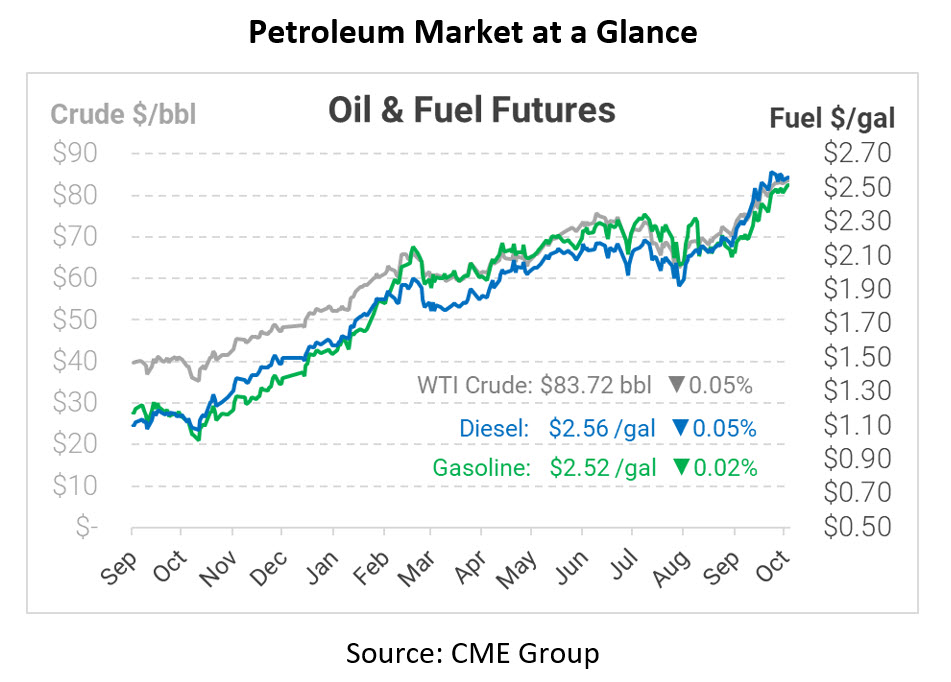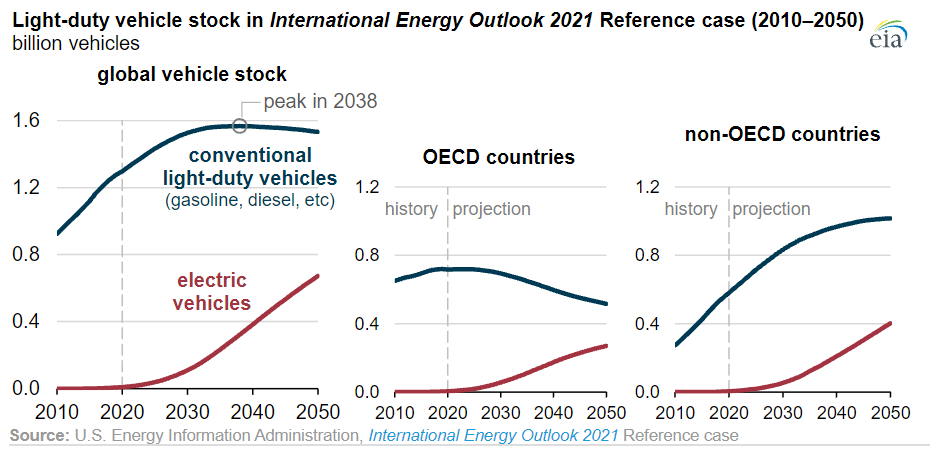
Will EVs Replace Fuel Demand? Not by 2050, Says EIA
Earlier in October, the Energy Information Administration (EIA) published a thorough annual report, its International Energy Outlook. This week, the agency highlighted its forecast for convention vs electric light-duty vehicles (LDVs), noting that they expect the world’s conventional light-duty fleet to peak in 2038. The analysis suggests a substantial increase in EVs following 2030, with EVs accounting for 31% of the world’s light vehicles.
According to the EIA, members of the OECD (consisting of 38 well-developed countries) have already seen their conventional light-duty fleet peak in 2019. That means that places like the US, Canada, and Europe can expect to see far more EV sales in the future, along with declining sales of traditional vehicles. Of course, developing countries will make up more than the difference, continuing to buy more cars of both types through 2050.
This analysis is helpful for predicting future energy trends, but it does not consider changed in heavy-duty vehicles, which drive the lion share of diesel demand. The most likely implication of fewer conventional cars is that refiners will shift as much production as possible from gasoline to diesel, which will ultimately moderate diesel prices somewhat in the coming decades. Across all petroleum products, though, the IEA expects demand to rise globally, so fuel markets aren’t going away anytime soon.
The International Energy Outlook also included some other useful points:
- Liquid fuels remain the largest energy source in the Reference case, but renewable energy use grows to nearly the same level.
- Supply of petroleum and other liquids continues increasing in both OPEC and non-OPEC regions to meet growing world demand through 2050 across cases.
- Non-OECD Asia lacks adequate production to meet growing demand; most of the crude oil it uses comes from the Middle East.
This article is part of Daily Market News & Insights
Tagged:
MARKET CONDITION REPORT - DISCLAIMER
The information contained herein is derived from sources believed to be reliable; however, this information is not guaranteed as to its accuracy or completeness. Furthermore, no responsibility is assumed for use of this material and no express or implied warranties or guarantees are made. This material and any view or comment expressed herein are provided for informational purposes only and should not be construed in any way as an inducement or recommendation to buy or sell products, commodity futures or options contracts.








